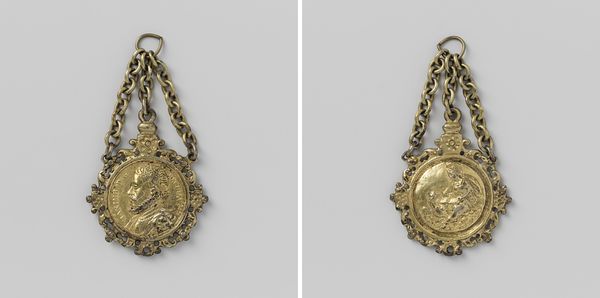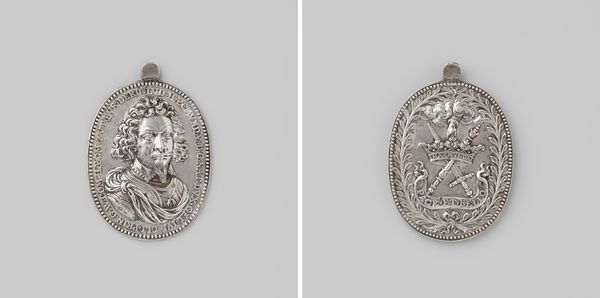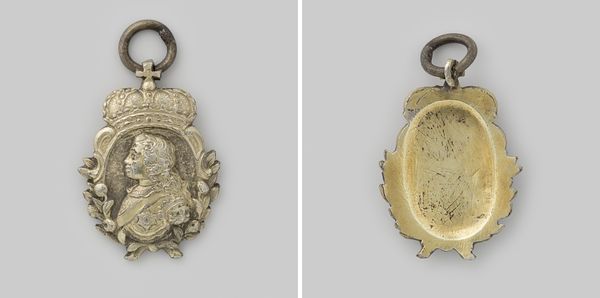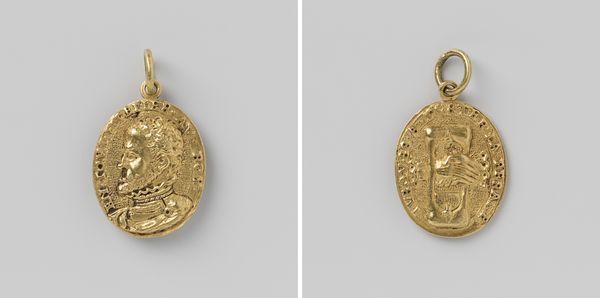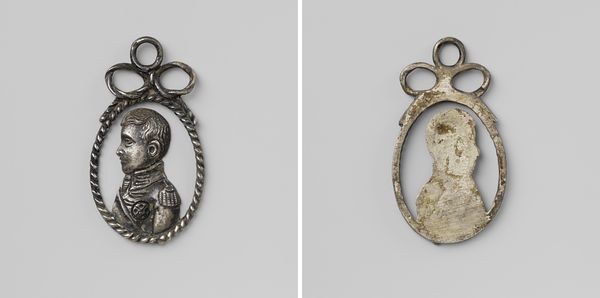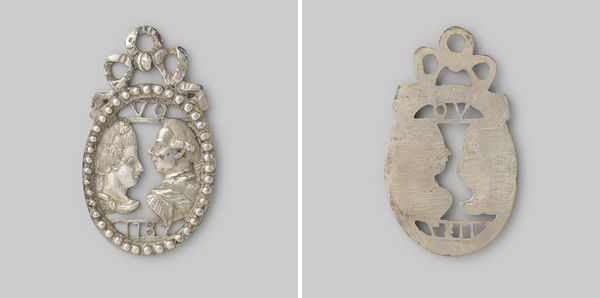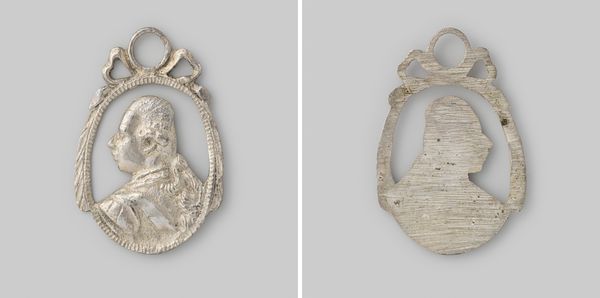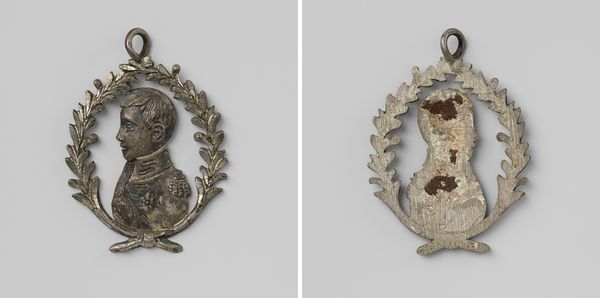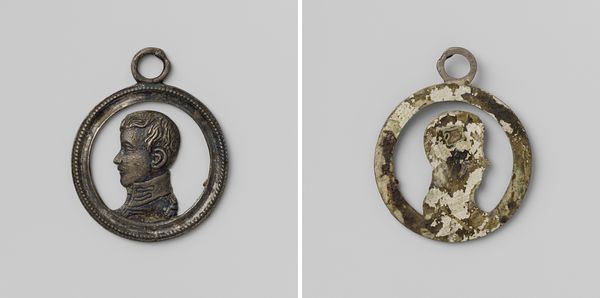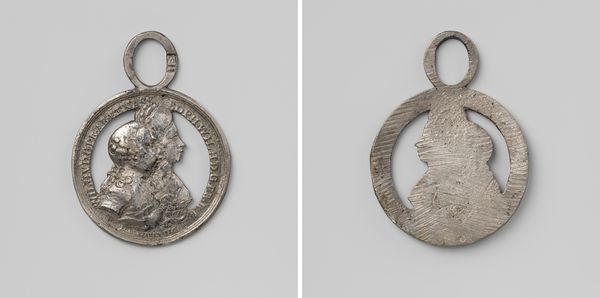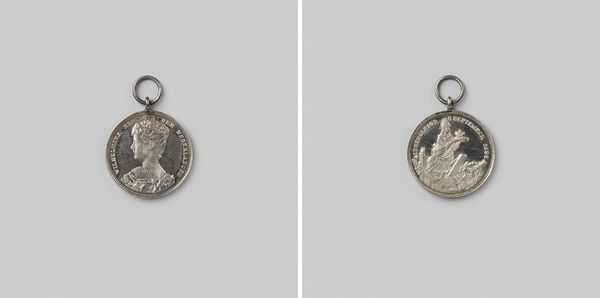
mixed-media, silver, print, metal, sculpture
#
portrait
#
mixed-media
#
silver
#
dutch-golden-age
# print
#
metal
#
sculpture
Dimensions: height 5 cm, width 2.5 cm
Copyright: Rijks Museum: Open Domain
Editor: So, this is the "Geuzenpenning met napje en kalebasjes," a mixed media piece featuring silver, from between 1800 and 1900. It’s housed here at the Rijksmuseum, though the artist is unknown. It’s quite small, a pendant really, but densely packed with imagery. What strikes you most about it? Curator: The Geuzenpenning is indeed small, yet resonant with symbolism. These pendants served as badges of identity, worn by those who sympathized with the Dutch Revolt against Spanish rule. Note the inscriptions around the edges—they were not merely decorative but coded messages of resistance and religious conviction. Can you see any discernible figures? Editor: Yes, vaguely. On one side, I see what looks like a portrait bust, very detailed and regal. On the other side, a figure holding something, maybe a staff? Is this a common image from that time? Curator: Precisely. The bust likely represents William of Orange, the leader of the Dutch Revolt, while the figure holding the staff is often interpreted as a symbol of justice or religious authority. The calabashes, or "kalebasjes", were symbols related to the "Sea Beggars" (Geuzen), who played a crucial role in the revolt. The whole piece then, becomes a powerful statement of allegiance. Do you feel a sense of that weight when viewing it? Editor: I do now, knowing that! I was mainly focusing on the craftsmanship, but understanding the context makes it much more compelling. It is more than a decoration. It's a miniature declaration! Curator: Exactly. The materials, too, play a role. Silver was not merely chosen for its aesthetic appeal but for its inherent value, signifying the importance of the cause. It's fascinating how an object so small can hold so much cultural memory. We read into it echoes of a struggle for independence, still alive. Editor: That makes perfect sense. I was missing so much by just looking at the surface. Now I can see this Geuzenpenning in the Rijksmuseum not just as an object, but as a loaded symbol of an entire historical period. Curator: And isn't that the exciting part about art, especially historical artifacts? There's always a story waiting to be uncovered, layer upon layer, like an archeological dig.
Comments
No comments
Be the first to comment and join the conversation on the ultimate creative platform.
